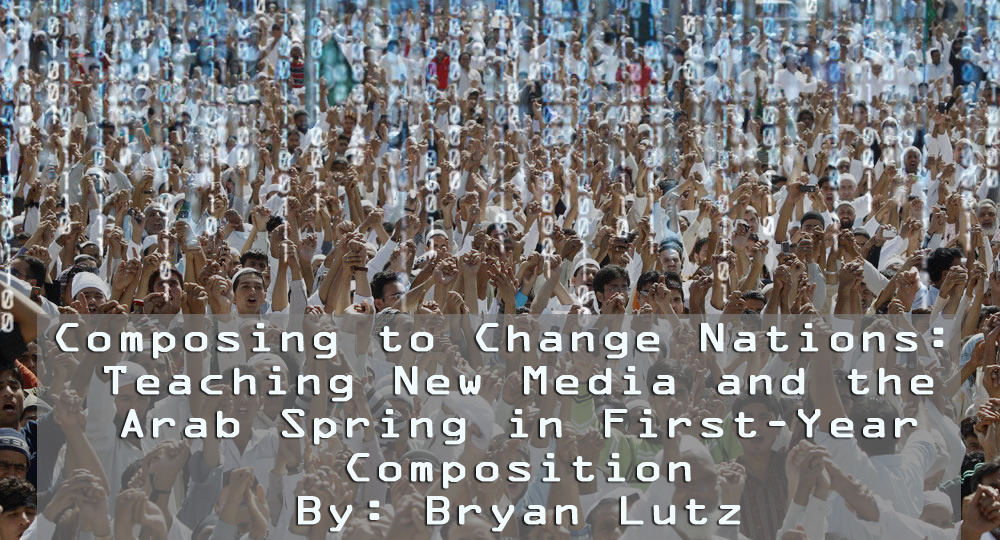Assignment
Goal #2: Questions to be Answered
To achieve the second aim of the assignment, I create a classroom environment that is question driven, much in the same vein as the directive questioning techniques of Stephen North and the problem-posing methods of Paulo Freire. First, students read a blog essay I authored called “The Affordances of New Media for Social Change.” This essay is an early draft of the Revolution section of this article and offers the interpretive schemes of affordances and velocity, as well as a heuristic of the possibilities of social networking for civic engagement. The students read this essay for two reasons: to provide an introduction to the kinds of advocacy they will be doing later in the assignment, and for students to use as a model for how to compose their own essays. At this point, it is important to recognize that this assignment works best in the hands of an instructor that is comfortable with technology, and in a classroom that has access to computers and the internet. This can be difficult because the technical grounds under which we work are fluid, so an assignment like this needs to take into consideration what kinds of technology are on hand (D. Selfe, 2003, pp. 23). Our English Department has a computer lab that hosts our class, and my own experience allows me to guide students on how to use the technology. An instructor who is not comfortable with technology may need either a support staff, or an assistant with substantive digital literacy to deal with problems as they may arise.
 |
| The Computer Lab in Ellis Hall |
My students analysis of my essay inevitably develops into a discussing of both blogging as a genre, and of how to successfully combine the stylistic conventions of the blog with the scholarly conventions of the academy. By using directive questioning (North), I facilitate class discussion by asking about the interpretive schemes that are used to understand the revolutions in Tunisia and Egypt. I also asks students to understand social networking through the lenses of the civic voluntarism model, new media affordances and velocity, which students will either confirm or complicate the essay’s conclusions based upon their own digital literacy and experiences with new media. This discussion will also produce the rubric for the course (see example). As a class we decide what is a successful blog argument and that will provide the criteria that I will use to evaluate their essays at the conclusion of the assignment.
From this discussion, my students not only begin to infer the purpose of their own essays, but also express variations of excitement and anxiety about the advocating to a broader public. During this discussion, important issues such as copyright inevitably come up, allowing students to discover for themselves the fair use doctrine (and if not, an instructor should certainly address them). However, not all of my students share the enthusiasm of the majority of the class. Some are not comfortable with technology even though they are young. Some are very nervous about having their work viewed by an audience other than the teacher. This is where my own experience web designer and community organizer allows me to assure students that they will have guidance every step of the way. By positioning myself as a facilitator of their discussion, and by pushing them to have a critical consciousness about new media technology, my students are challenged in much the same way I imagine that the protestors in the Arab spring were challenged. They have to look at the technology, ask questions about its affordances, and decide how they can innovate with the technology to achieve their purposes. This discussion can ease not only their anxieties about composing with new media, but also encourage them to think differently about the technologies which, up until now, they had known only as passive consumers.
